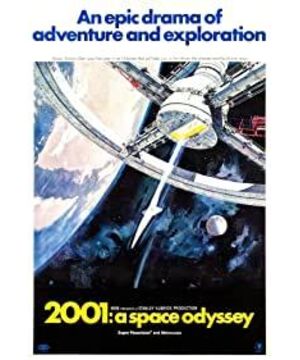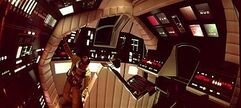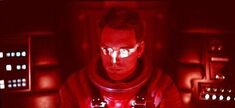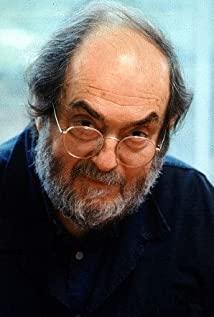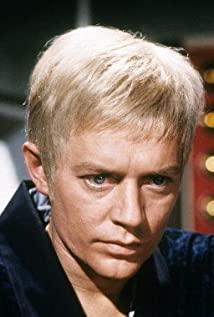The structure of the whole film is clear and even simple, and the plot is not complicated, but it is like a jar of old wine and a pot of tea, and the aftertaste raps for three days. In particular, the voice narrative ability of this film has reached an almost perfect level. When it is silent, it is so silent that only the heartbeat and breathing can be heard. When it is turbulent, the orchestral music is shocking, clean, and majestic. In addition, there is an inexplicable fear of the length of time, the vastness of space, the insignificance of human beings, and the ignorance of oneself that arises from watching the film.
Here's a simple analysis of some of the content of the film:
1. The poems say "without a word, but with all the love", Kubrick in this film has won the essence of this. A major element of 2001: A Space Odyssey is extraterrestrial civilizations. In the choice of the symbol of extraterrestrial civilization, Kubrick rejected the founder of extraterrestrial civilization who is most likely to "play" (this play is not another play), that is, the aliens we often say , chose a black slate, a creation that can prove that there was an extraterrestrial civilization that once existed but I don't know if it still exists. "The Great Way is Simple", Wu Zetian's wordless monument attracts the infinite imagination of future generations. This is especially true of the black slate that runs through the whole film, and runs through the entire human history (from the ape chapter to the space chapter).
The whole film is about 150 minutes long, and there is no dialogue for nearly 88 minutes. Even if there is, it is clean and neat, without redundant. Silence is better than a lotus flower. This is true for both dialogue and black slate.
About 12 minutes into the film, the black slate appeared for the first time, and the apes watched and touched it (panoramic shot). A montage of footage of a single ape hitting the corpse followed. In the second battle for the water source within the apes (the first battle was set up in the film, both sides were bare-handed), we can find that the orangutans who had been in contact with the black slate learned to use the tool - bone, and thus obtained the victory.
We can regard the first appearance of the black slate and the contact with the apes as the enlightenment of wisdom, or we can say that the representative of extraterrestrial civilization - the black slate, has accelerated in the history of human evolution (in this film) or even said that Determines the speed and direction of human evolution.
In the second, I will digress the analysis of the plot and say some digressions. What does the Black Slate or the "heritage" of extraterrestrial civilization mean to human beings? If it is discussed in the context of the above, the Black Slate can be said to be both the fire of Prometheus and the magic box of Pandora. It enlightens our minds, makes us taste meat, and makes us love blood. Even if this blood comes from the same kind.
What does the contact between Earth civilization or human civilization and extraterrestrial civilization mean? Should we continue to send electromagnetic signals to the universe to find extraterrestrial civilization? At this point, the author is more inclined to Hawking's point of view: "When you are walking on the road and you find an ant nest on the side of the road, will you walk over or stop; if you stop, will you kick it away or fight with it? This group of ants greeted and chatted; if you stopped and found a coin, a piece of gold, a diamond in the ant's nest, you would exchange it with the ants at an equal value, or you would open the ant's nest and take it away."
2. Returning to this film, after the famous switching scene in film history (bones to spaceships), the film transitioned from the ape chapter to the moon mission chapter. What is very, very interesting is that when switching from outside the cabin to the inside, Kubrick chose to emphasize this shot again. The whole picture in the cabin is still, only a pen is floating in the air. In the switching of bones-spaceship-pen, the film completed the rapid switching of time and space in just a few minutes, neat and vivid.
And the choice of these three symbols is also very meaningful: the ancestor of civilization - bone, the inheritor of civilization - pen, the carrier of civilization - spaceship. Another point worth pondering is that there is also a hint of the theme of the film behind this series of editing cuts: the relativity of space and time. For some living beings, the stars in our eyes are but the dust in their eyes, and the eternity in our eyes is but a moment in their eyes; and vice versa. This is shown directly in the large telephoto shot that follows: the spacecraft is about to reach the space station, and the swirling sea of stars is like dust floating under the lights at night. The dust is also the stars, the stars are the dust; the eternity is a moment, and the moment is eternal. It's absolutely stunning!
3. In the moon mission chapter, there is the second direct contact between humans and the black slate (medium shot and close-up shot). If the plot is developed according to the plot of the ape chapter, then this contact will inevitably start in the history of human civilization. It had a huge impact, but after another solar transit, the film switched directly to the third chapter - the Jupiter mission chapter, which postponed the viewing expectations caused by this suspense to the next chapter.
4. At the beginning of the Jupiter mission chapter, there is a seemingly useless but interesting scene: the picture starts with the red light facing the camera (it has not yet been explained that the red light is the camera of the computer), the hatch is opened, and an astronaut The operator walks from the inside of the red light to the camera, that is, the audience. When it gets closer and closer to the camera, the screen directly switches to the next scene. When we understand the meaning of the red light and look at this clip again, we will find that the computer always observes and closely watches the human being as an astronaut from a detached, almost top-down angle, with the same purpose of the lens (the computer Human Perspective) is repeated several times in subsequent episodes, but this is the only one presented in this way. This also paved the way for the subsequent outbreak of conflicts.
5. In the scene where the two astronauts are watching the interview, it ends with "Does the computer have emotions?", but does not discuss this issue, but jumps directly to the exterior. Here, we ignore the middle plot and jump to the end of the Jupiter mission chapter, where the astronauts turn off the computer. Different from other paragraphs in the film, the main information of this scene is not carried on the picture and sound, but on the lines. . To be precise, the computer's sentence: "I'm afraid."
Emotions are complex and changeable, so in the evolutionary history of species, which emotion is the most important? That's right, fear and fear. The physical feeling of pain tells us that fire will hurt us, and the knife will hurt us, so we must stay away from them; and the same is true of psychological fear and fear, which prompts us to seek advantages and avoid disadvantages, and also prompts computers to choose kill astronauts. "I was afraid that humans would interfere with the mission, and I was afraid that humans would turn me off, so I chose to kill humans."
6. Returning to this film, before the first mission out of the cabin, there were two meteorites slid across the camera. Jump to the astronaut's second flight and get murdered by a computer, and you'll see how similar the two scenarios are.
7. After the scene where the two astronauts conspired and was discovered by the computer, the rhythm that should have reached its climax was directly cut off by the director with subtitles and a large black screen and orchestral music (this is also the second time that the whole film appeared at the beginning. class method). Then cut directly to the second mission, during which all the thinking and physical activities of the computer and human were omitted, but it achieved the effect of being speechless. Such tactics also appear in the passage where one astronaut dies and another goes to find the body. After being directly rejected by the computer, the camera cut from the inside to the outside of the cabin. After a brief still picture, the astronauts in the auxiliary cabin directly abandoned the dead astronaut's body and flew to the emergency hatch. The purpose of getting out of the cabin is to bring back the corpses of teammates, but when his own life is threatened, the first premise of returning to the cabin is to throw away the corpses and deny the purpose of falling out of the cabin. In this crucial decision, the camera never gave the protagonist a frontal shot, but an exterior instead. The "silent" technique was used again and again.
8. In the choice of light, in addition to the use of colorless light in some scenes, most of the light is selected in red. The aisle, the computer storage room, the spacecraft cockpit in the early stage of the lunar mission, the computer camera. When the conflict in the plot has not yet unfolded, this tone brings only a hint of unknown unease, and in the scene where the astronaut "blows" himself into the spaceship aisle, the contradiction has already unfolded, the red accumulated in the early stage is used up. Emotions exploded and culminated in the computer room.
9. In the ending segment of the Jupiter mission chapter, it can be roughly divided into three segments according to the content of the screen: rectangular light strips, irregular light clusters, real scene dislocation and color. The most interesting thing is the second paragraph: after a big bang light cluster that is similar to the birth of the universe, there are various irregular light clusters similar to sperm and eggs (forgive the author's brain hole), the birth of the universe and individual life. Birth occurs at the same time.
The special effects of this passage through the screen do not seem to be very clever today, but the profound meaning is by no means what some tasteless special effects can represent. There is nothing more extraordinary than this.
10. As for the fourth paragraph, which is also the most profound "room chapter", I forgive the author's lack of analysis at this stage. And stop the text here, and leave it for later.
View more about 2001: A Space Odyssey reviews


